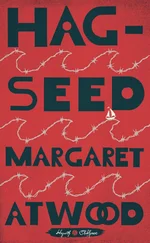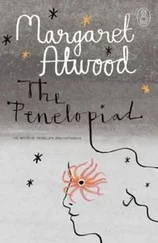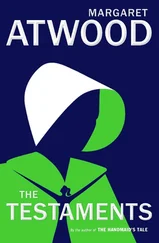Margaret Atwood - Alias Grace
Здесь есть возможность читать онлайн «Margaret Atwood - Alias Grace» весь текст электронной книги совершенно бесплатно (целиком полную версию без сокращений). В некоторых случаях можно слушать аудио, скачать через торрент в формате fb2 и присутствует краткое содержание. Жанр: Старинная литература, на английском языке. Описание произведения, (предисловие) а так же отзывы посетителей доступны на портале библиотеки ЛибКат.
- Название:Alias Grace
- Автор:
- Жанр:
- Год:неизвестен
- ISBN:нет данных
- Рейтинг книги:4 / 5. Голосов: 1
-
Избранное:Добавить в избранное
- Отзывы:
-
Ваша оценка:
- 80
- 1
- 2
- 3
- 4
- 5
Alias Grace: краткое содержание, описание и аннотация
Предлагаем к чтению аннотацию, описание, краткое содержание или предисловие (зависит от того, что написал сам автор книги «Alias Grace»). Если вы не нашли необходимую информацию о книге — напишите в комментариях, мы постараемся отыскать её.
Alias Grace — читать онлайн бесплатно полную книгу (весь текст) целиком
Ниже представлен текст книги, разбитый по страницам. Система сохранения места последней прочитанной страницы, позволяет с удобством читать онлайн бесплатно книгу «Alias Grace», без необходимости каждый раз заново искать на чём Вы остановились. Поставьте закладку, и сможете в любой момент перейти на страницу, на которой закончили чтение.
Интервал:
Закладка:
So now every time this happens, I say I forgive him. I put my hands on his head as if in a book, and I turn my eyes up and look solemn, and then kiss him and cry a little; and then after I’ve forgiven him, he is back to his usual self the next day, playing on his flute as if he’s a boy again and I am fifteen, and we are out in the orchard making daisy chains at Mr. Kinnear’s.
But I don’t feel quite right about it, forgiving him like that, because I am aware that in doing so I am telling a lie. Though I suppose it isn’t the first lie I’ve told; but as Mary Whitney used to say, a little white lie such as the angels tell is a small price to pay for peace and quiet.
I think of Mary Whitney frequently these days, and of the time we threw the apple peelings over our shoulders; and it has all come true after a fashion. Just as she said, I married a man whose name begins with a J; and as she also said, I first had to cross over water three times, since it was twice on the ferry to Lewiston, going and coming back, and then once again on the way here. Sometimes I dream that I am again in my small bedchamber at Mr. Kinnear’s, before all the horror and tragedy; and I feel so safe there, not knowing what is to come. And sometimes I dream that I am still in the Penitentiary; and that I will wake to find myself once more locked in my cell, shivering on the straw mattress on a cold winter morning, with the keepers laughing outside in the yard. But I am really here, in my own house, in my own chair, sitting on the verandah. I open and shut my eyes and pinch myself, but it remains true.
Now here is another thing I have told no one.
I’d just had my forty-fifth birthday when I was let out of the Penitentiary, and in less than a month I will be forty-six, and I’d thought I was well past the time for child-bearing. But unless I am much mistaken, I am now three months gone; either that or it is the change of life. It is hard to believe, but there has been one miracle in my life already, so why should I be surprised if there is another one? Such things are told of in the Bible; and perhaps God has taken it into his mind to make up a little for all I was put through at a younger age. But then it might as easily be a tumour, such as killed my poor mother at last; for although there is a heaviness, I’ve had no sickness in the mornings. It is strange to know you carry within yourself either a life or a death, but not to know which one. Though all could be resolved by consulting a doctor, I am most reluctant to take such a step; so I suppose time alone must tell. While I am sitting out on the verandah in the afternoons, I sew away at the quilt I am making. Although I’ve made many quilts in my day, this is the first one I have ever done for myself. It is a Tree of Paradise; but I am changing the pattern a little to suit my own ideas.
I’ve thought a good deal about you and your apple, Sir, and the riddle you once made, the very first time that we met. I didn’t understand you then, but it must have been that you were trying to teach me something, and perhaps by now I have guessed it. The way I understand things, the Bible may have been thought out by God, but it was written down by men. And like everything men write down, such as the newspapers, they got the main story right but some of the details wrong. The pattern of this quilt is called the Tree of Paradise, and whoever named that pattern said better than she knew, as the Bible does not say Trees. It says there were two different trees, the Tree of Life and the Tree of Knowledge; but I believe there was only the one, and that the Fruit of Life and the Fruit of Good and Evil were the same. And if you ate of it you would die, but if you didn’t eat of it you would die also; although if you did eat of it, you would be less bone-ignorant by the time you got around to your death. Such an arrangement would appear to be more the way life is.
I am telling this to no one but you, as I am aware it is not the approved reading. On my Tree of Paradise, I intend to put a border of snakes entwined; they will look like vines or just a cable pattern to others, as I will make the eyes very small, but they will be snakes to me; as without a snake or two, the main part of the story would be missing. Some who use this pattern make several trees, four or more in a square or circle, but I am making just one large tree, on a background of white. The Tree itself is of triangles, in two colours, dark for the leaves and a lighter colour for the fruits; I am using purple for the leaves and red for the fruits. They have many bright colours now, with the chemical dyes that have come in, and I think it will turn out very pretty.
But three of the triangles in my Tree will be different. One will be white, from the petticoat I still have that was Mary Whitney’s; one will be faded yellowish, from the prison nightdress I begged as a keepsake when I left there. And the third will be a pale cotton, a pink and white floral, cut from the dress of Nancy’s that she had on the first day I was at Mr. Kinnear’s, and that I wore on the ferry to Lewiston, when I was running away.
I will embroider around each one of them with red feather-stitching, to blend them in as a part of the pattern.
And so we will all be together.
Author’s Afterword
Alias Grace is a work of fiction, although it is based on reality. Its central figure, Grace Marks, was one of the most notorious Canadian women of the 1840s, having been convicted of murder at the age of sixteen.
The Kinnear-Montgomery murders took place on July 23, 1843, and were extensively reported not only in Canadian newspapers but in those of the United States and Britain. The details were sensational: Grace Marks was uncommonly pretty and also extremely young; Kinnear’s housekeeper, Nancy Montgomery, had previously given birth to an illegitimate child and was Thomas Kinnear’s mistress; at her autopsy she was found to be pregnant. Grace and her fellow-servant James McDermott had run away to the United States together and were assumed by the press to be lovers. The combination of sex, violence, and the deplorable insubordination of the lower classes was most attractive to the journalists of the day.
The trial was held in early November. Only the Kinnear murder was tried: since both of the accused were condemned to death, a trial for the Montgomery murder was considered unnecessary. McDermott was hanged in front of a huge crowd on November 21; but opinion about Grace was divided from the start, and due to the efforts of her lawyer, Kenneth MacKenzie, and a group of respectable gentleman petitioners — who pleaded her youth, the weakness of her sex, and her supposed witlessness — her sentence was commuted to life, and she entered the Provincial Penitentiary in Kingston on November 19, 1843.
She continued to be written about over the course of the century, and she continued to polarize opinion. Attitudes towards her reflected contemporary ambiguity about the nature of women: was Grace a female fiend and temptress, the instigator of the crime and the real murderer of Nancy Montgomery, or was she an unwilling victim, forced to keep silent by McDermott’s threats and by fear for her own life? It was no help that she herself gave three different versions of the Montgomery murder, while James McDermott gave two.
I first encountered the story of Grace Marks through Susanna Moodie’s Life in the Clearings (1853). Moodie was already known as the author of Roughing It in the Bush, a discouraging account of pioneering life in what was then Upper Canada and is now Ontario. Its sequel, Life in the Clearings, was intended to show the more civilized side of “Canada West,” as it had by then become, and included admiring descriptions of both the Provincial Penitentiary in Kingston and the Lunatic Asylum in Toronto. Such public institutions were visited like zoos, and, at both, Moodie asked to see the star attraction, Grace Marks.
Читать дальшеИнтервал:
Закладка:
Похожие книги на «Alias Grace»
Представляем Вашему вниманию похожие книги на «Alias Grace» списком для выбора. Мы отобрали схожую по названию и смыслу литературу в надежде предоставить читателям больше вариантов отыскать новые, интересные, ещё непрочитанные произведения.
Обсуждение, отзывы о книге «Alias Grace» и просто собственные мнения читателей. Оставьте ваши комментарии, напишите, что Вы думаете о произведении, его смысле или главных героях. Укажите что конкретно понравилось, а что нет, и почему Вы так считаете.












